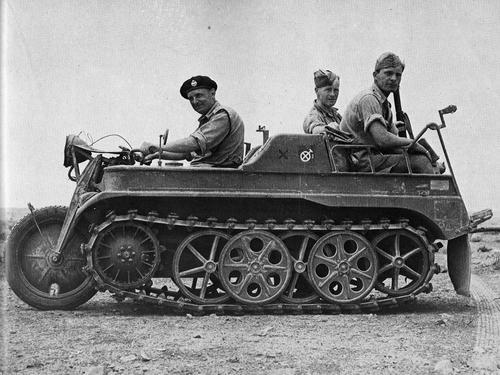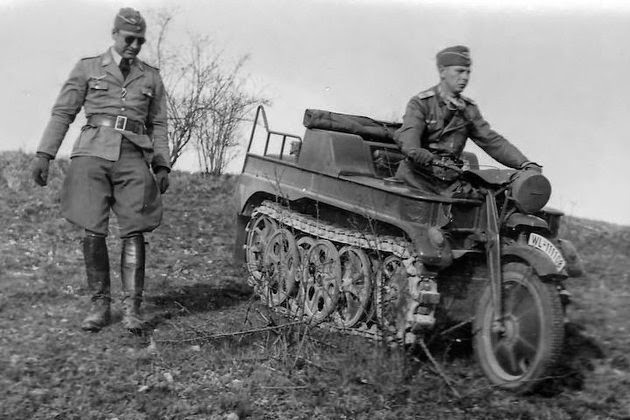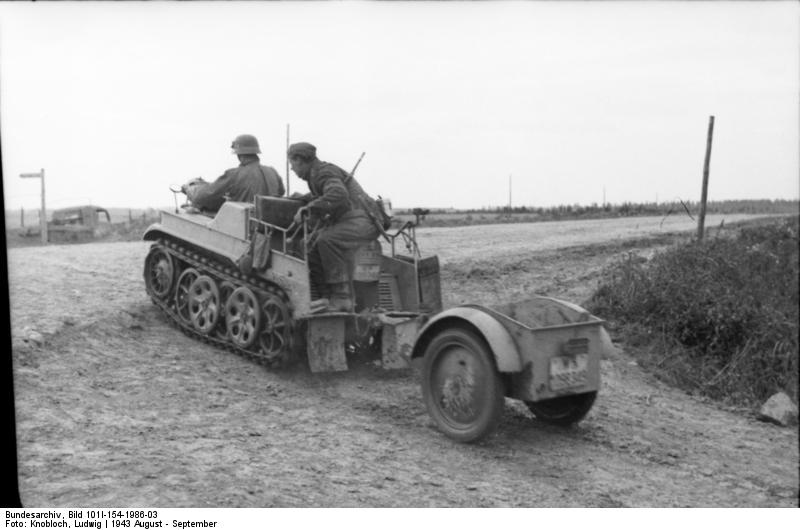This is the SdKfz 2, also known as Kleines Kettenkraftrad HK 101 or Kettenkrad (Ketten = chain/tracks, krad = abbreviation of the German word Kraftrad, a German term for motorcycle)
If you’ve watched ‘Saving Private Ryan’, that famous Tom Hanks World War II movie, you probably saw one these weird looking motorcycles. It maybe looks clumsy and not very capable, but actually it was on of the most reliable German vehicles during the war. The HK 101 gave excellent performance on the muddy and harsh roads in Russia.
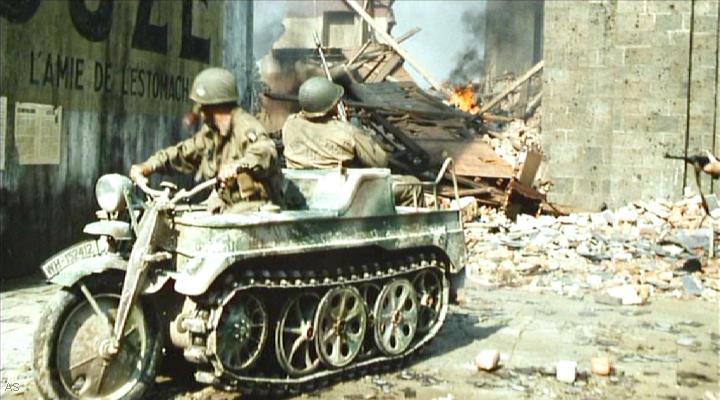
The Kleines Kettenkraftrad HK 101 is one of the most iconic German half-track vehicles of WWII. It was designed in June 1939 by engineer Heinrich Ernst Kniepkamp and initially used by forestry workers. In 1941, Germany invaded the Soviet Union. The military immediately saw the potential of HK 101 as an all-terrain vehicle. It was modified to be used as a light tractor for both army and airborne troops, very suitable for moving artillery systems or any kind heavy cargo. The compact design of the Kettenkrad allowed easy air transportation (it could fit inside a Junkers JU 52 plane)
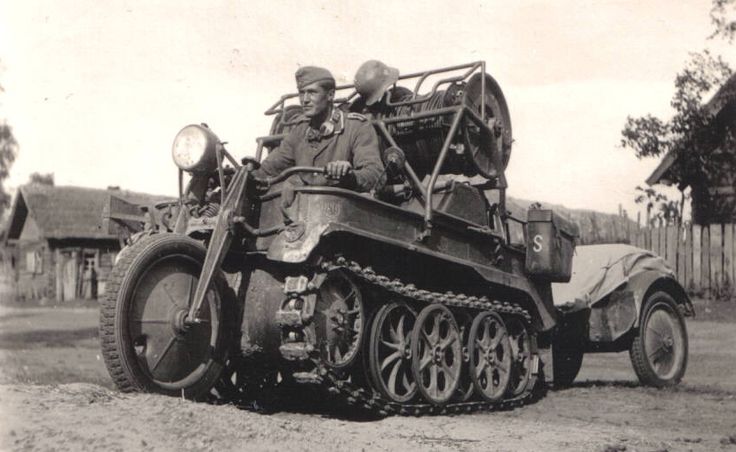
The engine was manufactured by NSU Motorenwerke AG (acquired by the Volkswagen Group in 1969 and then merged with Auto Union, to eventually evolve into Audi as it is known today). It was powered by Opel Olimpia liquid cooled four-cylinder 1.5l engine with 36 horsepower output at 3 400 rpm. HK 101 had a top road speed of 44mph and because of the tracks, it was to climb up to 24° in sand and even more on hard ground.
It was operated by turning the handlebars and for sharp turns the track brakes could be also used.
The vehicle came with a separate cargo trailer, enabling it to haul large loads. In muddy terrain, it was possible to remove the front wheel and drive it using only the tracks.
There were 8,345 units built during the war. In 1944, the Allies bombed the factory where it was built and production was stopped.
There are Many Kettenkrads still in existence today. Some of them are restored and in driving condition. Prices for restored units can go really high. With a little bit of luck, you can find yourself an old, unrestored HK 101 for a very low price. It could turn out into a really nice project.
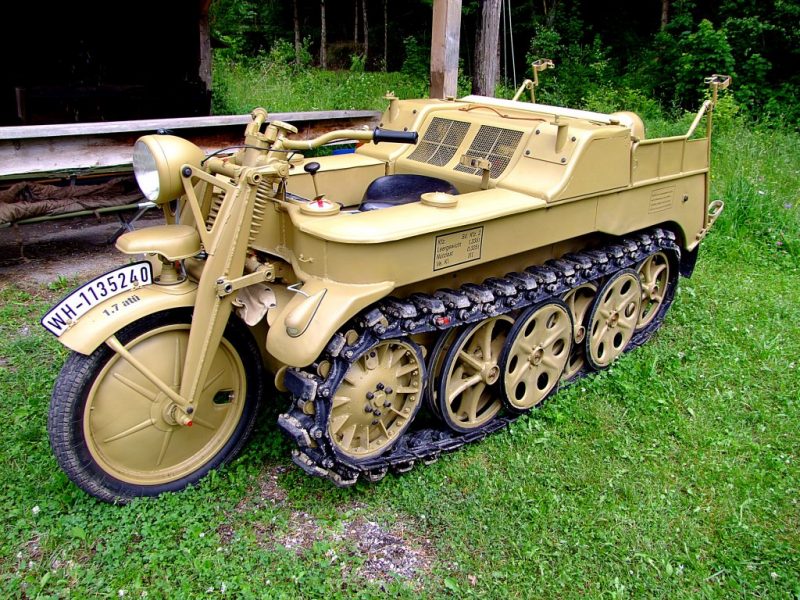
Specifications:
Weight: 1560kg (3,440 lb)
Crew: 3 men
Engine: Opel Olimpia 1.5l / 4-cylinder / 36hp
Speed: Road: 70 km/h (44 mph)
Cross-Country: /
Range: Road: 250km (161 miles)
Cross-Country: /
Fuel Capacity: 42 litres
Lenght: 3.00m (9 ft 10 in)
Width: 1.00m (3 ft 3 in)
Height: 1.20m (3 ft 11 in)
Armament: /
Ammo: /
Armor: /
Source: worldwarIIinpictures, imcdb, wikipedia, fahrzeugbilder, silodrome, 360carmuseum

